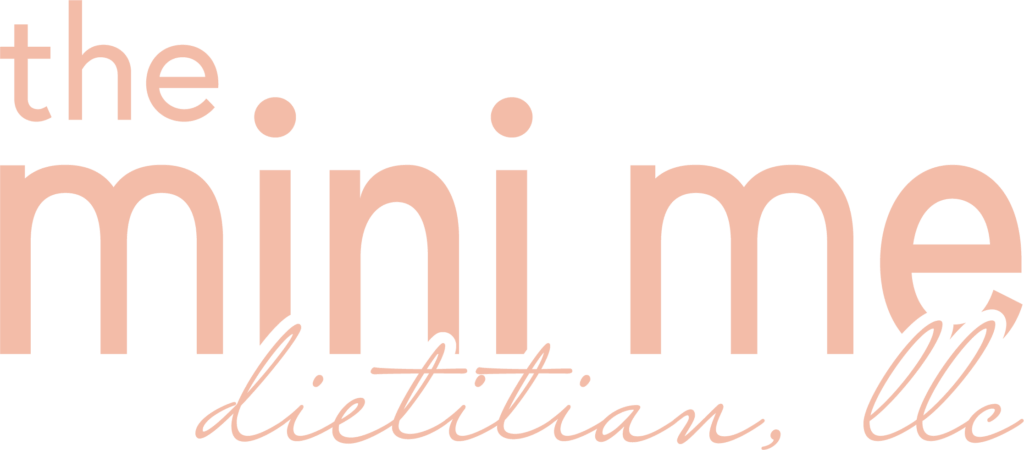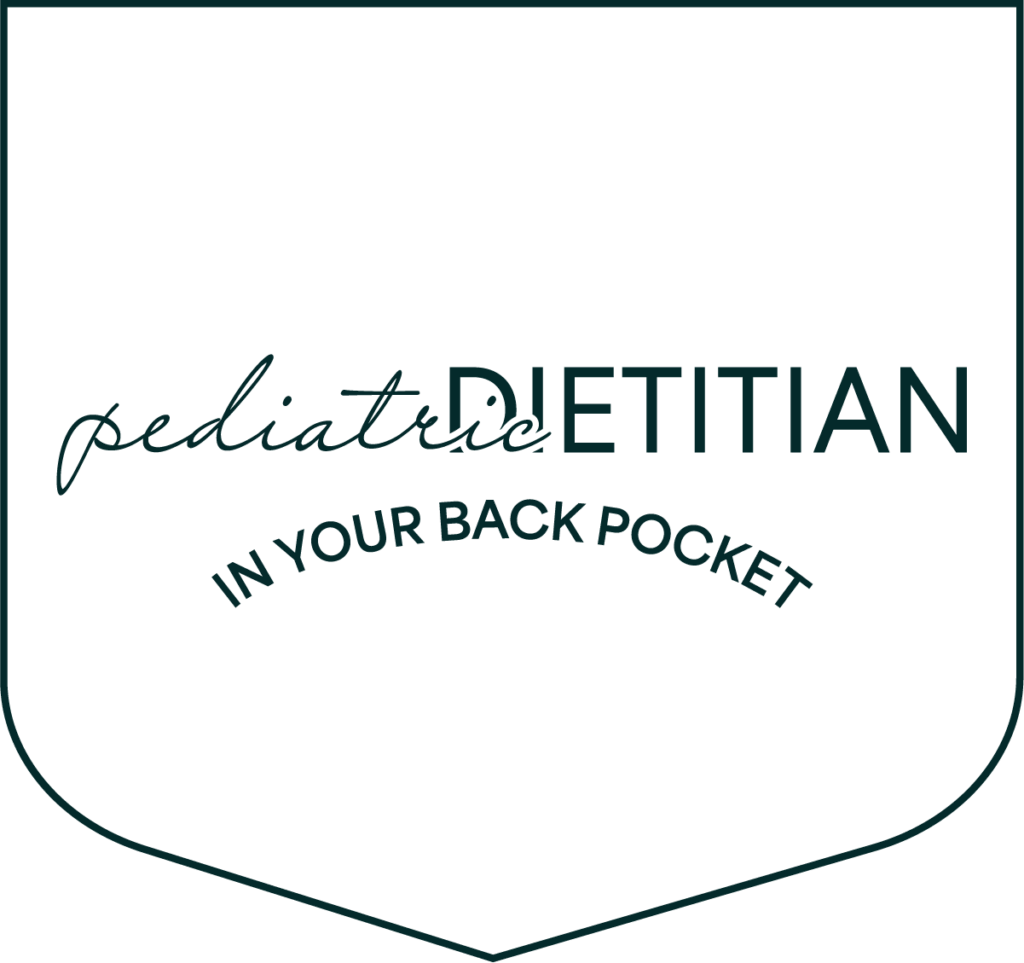Let’s talk about toddler milk consumption! Milk can be an easy and convenient source of calcium, protein, and fat – all crucial nutrients for growth and development – but many parents lack guidance around its use in toddlerhood.
If you’ve ever asked yourself:
- “What is the best type of milk to offer?”
- “How much is too much? Or not enough?”
- “When should little ones start drinking milk?”
- or, “Does my toddler even have to drink milk?”
This is for you!
As a Pediatric Dietitian, I often get these questions, so I’ve pulled together my answers in this blog post to guide you.
Your Questions Answered About Milk for Toddlers
Q: When Can My Baby Start Drinking Cow’s Milk?
A: Breast milk or formula should be the primary source of nutrition for babies under 12 months. Cow’s milk should only be introduced as a beverage after 12 months of age.
Q: What Type of Milk Should My Child Drink After 12 Months?
A: The American Academy of Pediatrics (AAP) recommends whole cow’s milk for toddlers ages 12–24 months, as the fat content and nutrients support brain development and growth.
Q: Can My Baby Have Plant-Based Milk?
A: Most plant-based milks (ex: almond, oat, or rice milk) lack sufficient protein and fat for a growing toddler. For most little ones, whole cow’s milk is the best choice after 12 months, as it provides essential nutrients like calcium, protein, and healthy fats.
Milk alternatives should not be introduced as a beverage before 12 months. If your little one requires a milk alternative, fortified soy or pea milk are the best options, as they are the most nutritionally comparable to cow’s milk. Be sure to select an unsweetened, unflavored variety to avoid added sugars, and check that it is fortified with vitamin D and calcium, as nutrient levels can vary between brands.
Q: How Much Milk Should My Toddler Drink?
A: Toddlers ages 12–24 months, can consume 16–24 ounces (2–3 cups) of whole milk daily. However, every child is different, and it’s important to follow their cues. Some toddlers may naturally drink less, and that’s okay! For little ones who aren’t interested in milk, incorporating other dairy sources like yogurt and cheese can help meet their nutritional needs.
It’s also important to avoid excessive milk intake, as too much can interfere with iron absorption and cause anemia or even contribute to picky eating. The key is balance—milk is just one part of a well-rounded diet and should be utilized as a beverage option, not as a primary nutrition source.
Q: Should I Still Breastfeed After 12 Months?
A: Yes! The World Health Organization (WHO) and AAP encourage breastfeeding beyond 12 months if both mom and baby are willing. Breast milk continues to provide valuable nutrients and immune support beyond the first birthday.
Q: Is It Safe to Give My Child Raw Milk?
A: No, raw milk and raw milk products from cows, goats, and sheep can carry harmful bacteria and other germs that can make your child very sick. These harmful bacteria can lead to serious health issues and even be life-threatening. Raw milk, or unpasteurized milk, has not undergone the pasteurization process that kills harmful germs, making it unsafe for little ones as their immune systems are not fully developed.
Q: Should I transition to low-fat milk after 2 years?
A: After age 2, the American Academy of Pediatrics (AAP) recommends switching to low-fat or non-fat milk (such as 1% or skim) for toddlers, if your child is growing well and doesn’t have any nutritional or health concerns. Whole milk is still important for brain development up until this point due to its higher fat content.
Q: When should I serve milk—with meals, or before/after?
A: The best time to serve milk is with meals or snacks. Serving milk alongside food helps your toddler get the benefits of calcium and protein while avoiding interfering with their appetite. If milk is served before or between meals, your child may be too full to eat their solid food, potentially missing out on other nutrients.
Q: What’s the benefit of buying organic milk?
A: Organic milk refers to milk produced on farms that follow specific practices: cows are fed food grown without pesticides or fertilizers, given access to pasture, and are not treated with hormones or certain medications. All U.S. milk must meet strict quality and safety standards, but organic farms adhere to additional criteria. While organic milk is a great option, both organic and conventional milk provide similar nutritional benefits. The decision to buy organic is ultimately a personal choice depending on your family’s preferences!
Q: Do toddlers HAVE to drink milk?
A: No, milk is not a requirement for toddlers, but it’s an easy and convenient source of calcium, protein, and fat, all crucial for growth and development. If your child refuses milk, has an allergy, or you prefer not to offer it, you can offer alternatives like fortified plant-based milks (e.g., fortified soy milk) or include other calcium rich foods. Milk is beneficial, but there are other ways to meet your child’s nutritional needs!
Q: How do I transition my child from a bottle to a cup?
A: Transitioning from a bottle to a cup can be tricky! The key is to gradually reduce bottle use and replace them with open or straw cups. Start by offering small amounts of milk in the cup, while continuing to bottle feed at other times. I recommend not putting milk in bottles after 12 months, as this may prolong the bottle habit. It’s ideal to be completely bottle-free by 15-18 months!
Q: What About Juice?
A: According to the American Academy of Pediatrics (AAP), infants younger than 12 months should not be given any juice (outside of medical direction).
For toddlers ages 1 through 3, it’s recommended to limit fruit juice to no more than 4 ounces (½ cup) per day of 100% fruit juice. Juice offers no nutritional benefit over whole fruit, which provides fiber and essential nutrients. Juice is high in sugar, can contribute to tooth decay, and may displace more nutritious liquids like breast milk, cows milk, or water. Serving a variety of whole fruits is going to be the better choice.
I’m truly so passionate about helping parents like you navigate nutrition for your little ones with confidence because this knowledge is vital for their growth, development, and long-term health.
If you’re looking for more personalized guidance and practical application of information like this, Apply to Work with Me Inside The Mini Me Method! Together, we’ll ensure your little one is on the right track for a successful feeding journey and a strong nutritional foundation!


